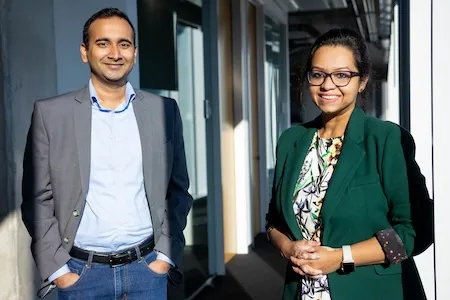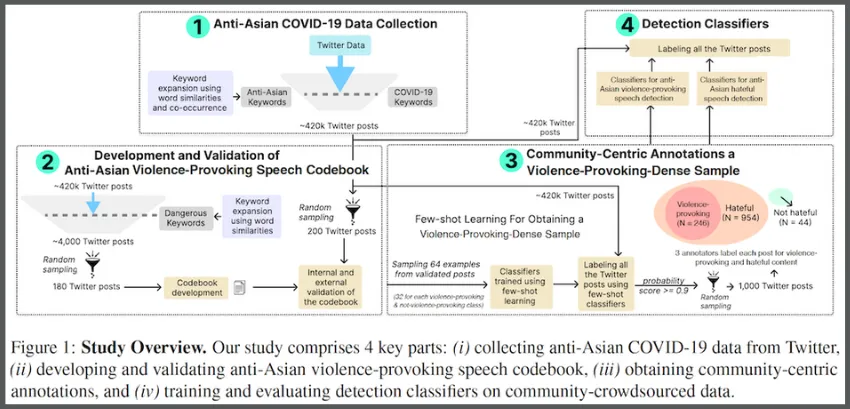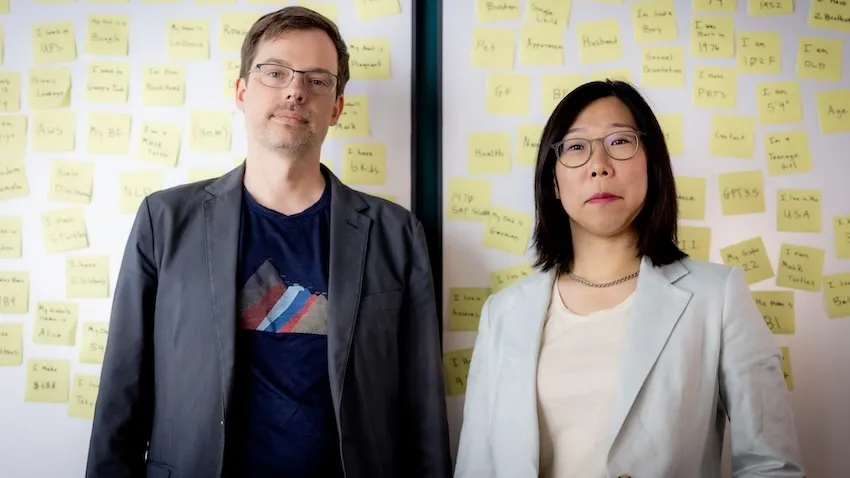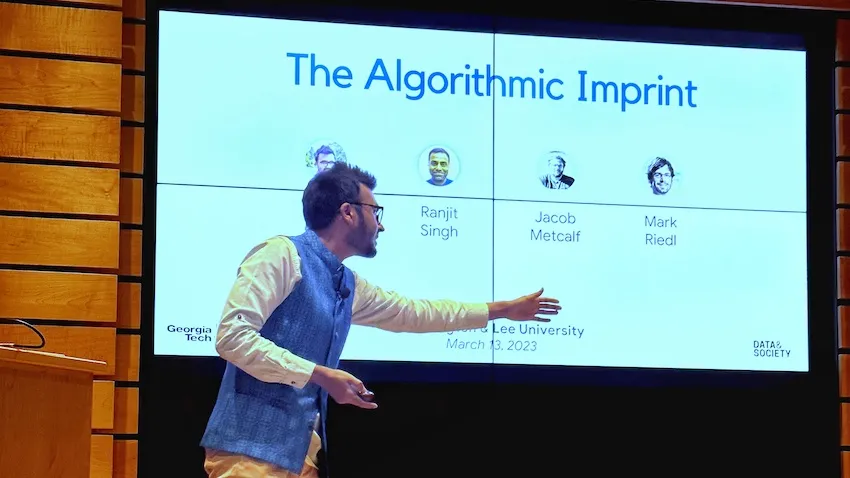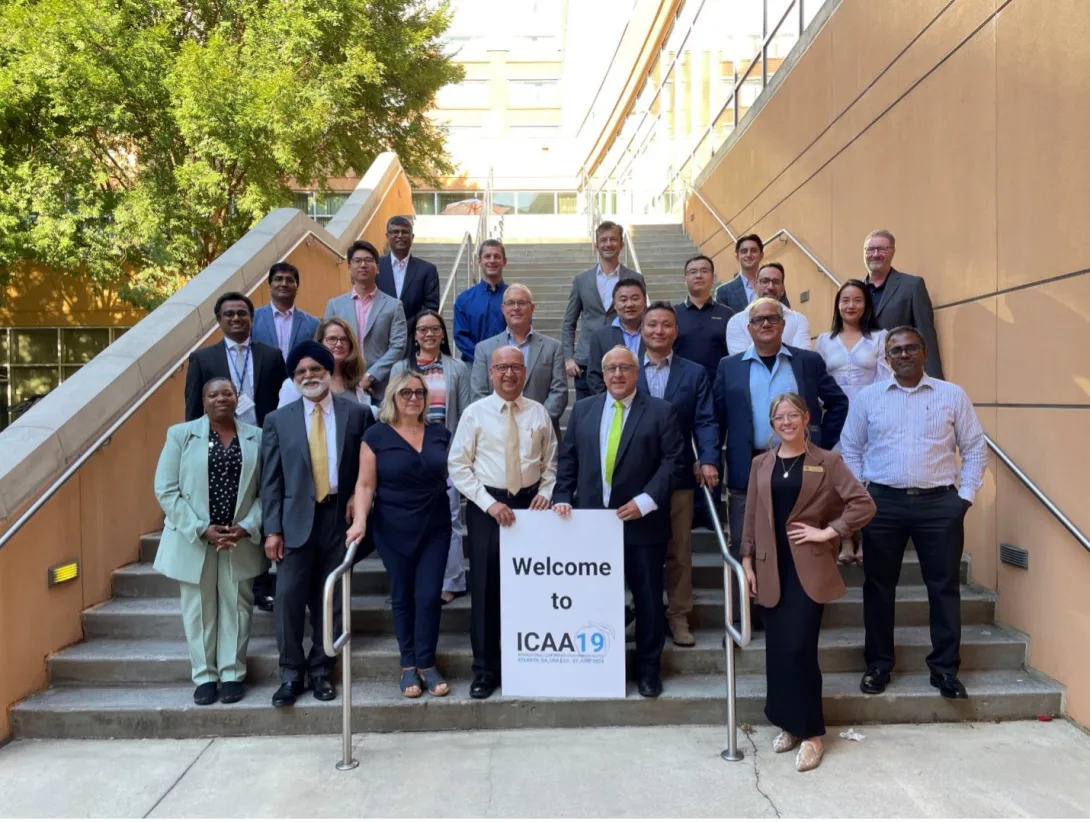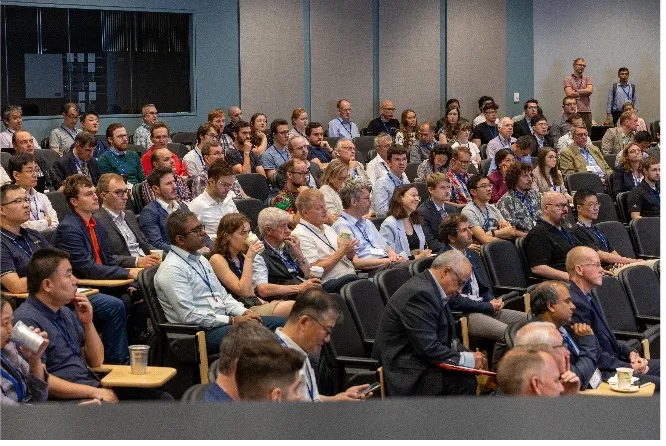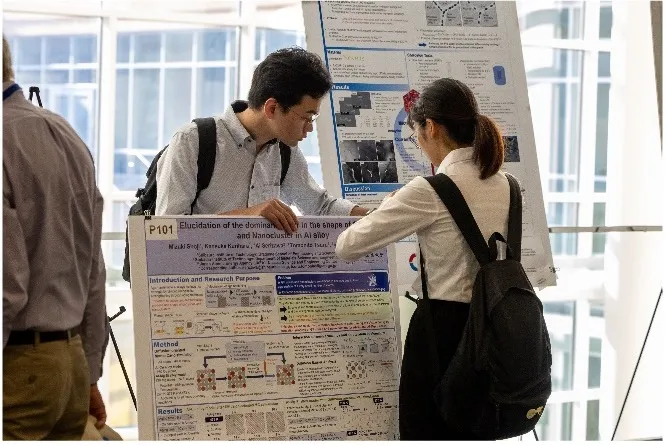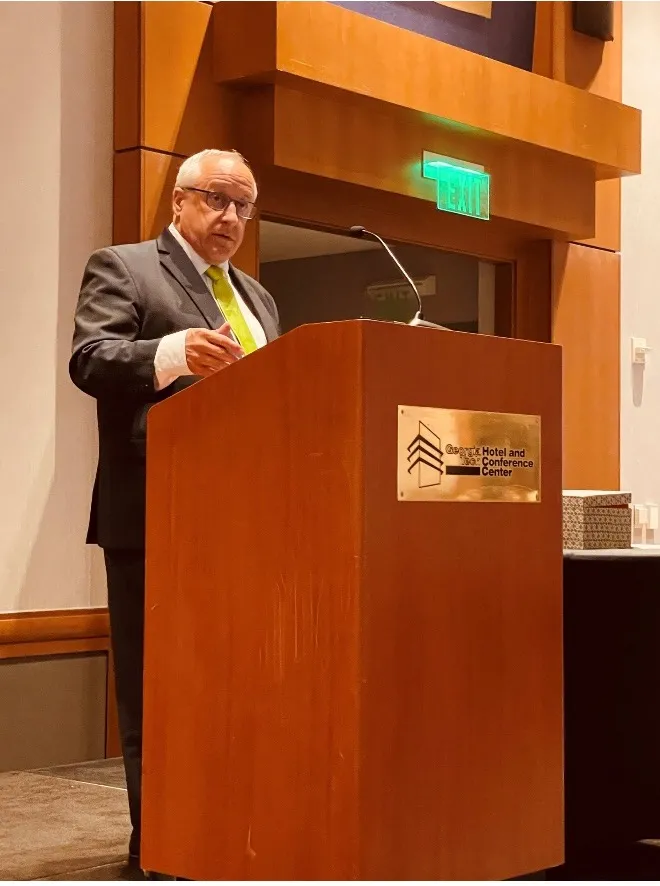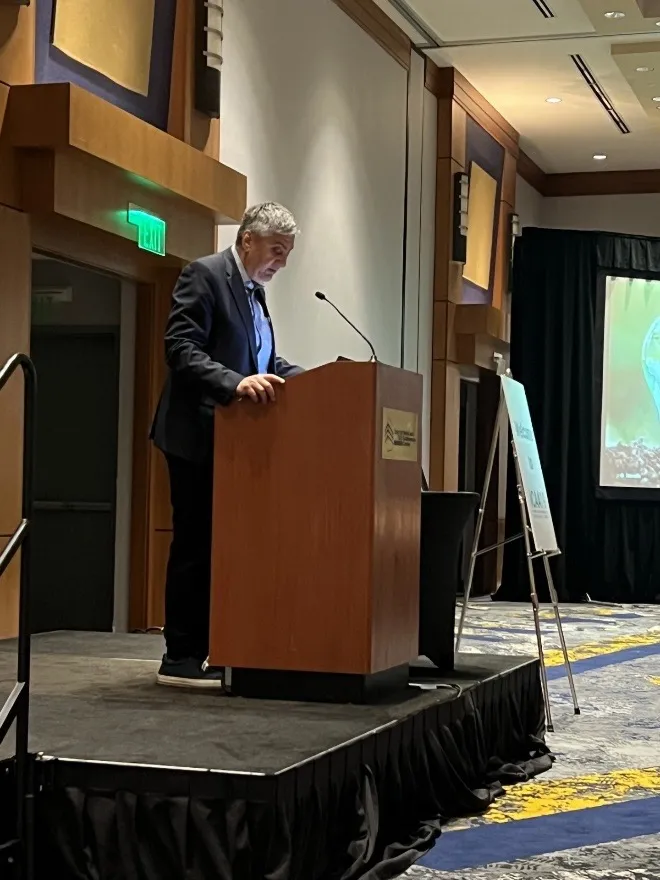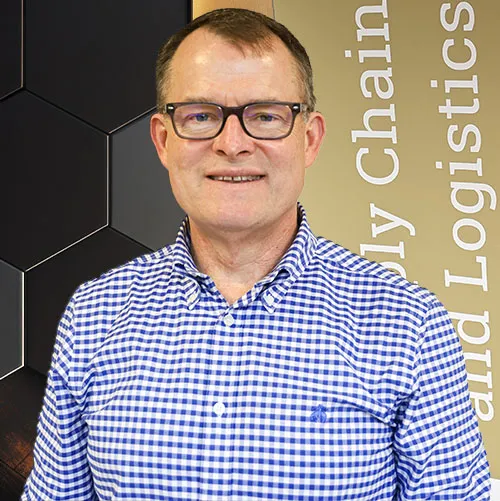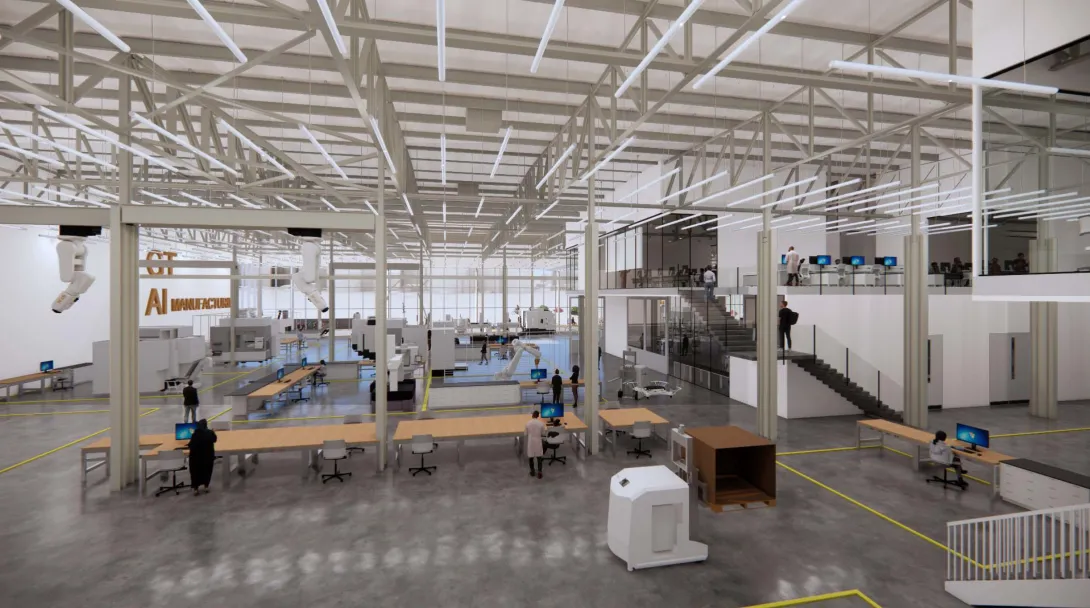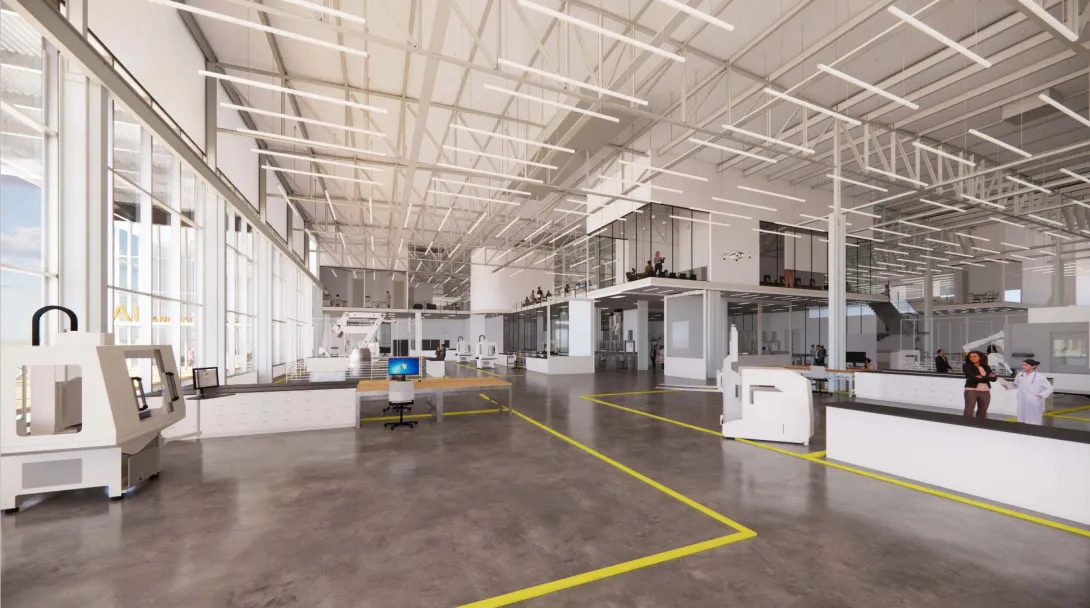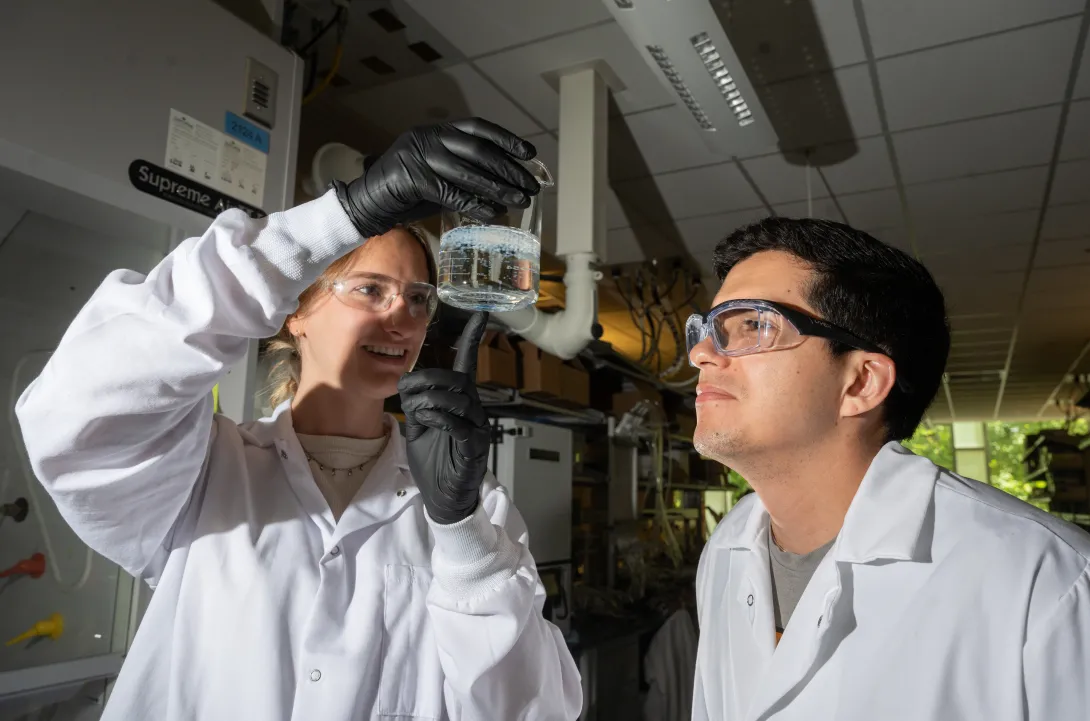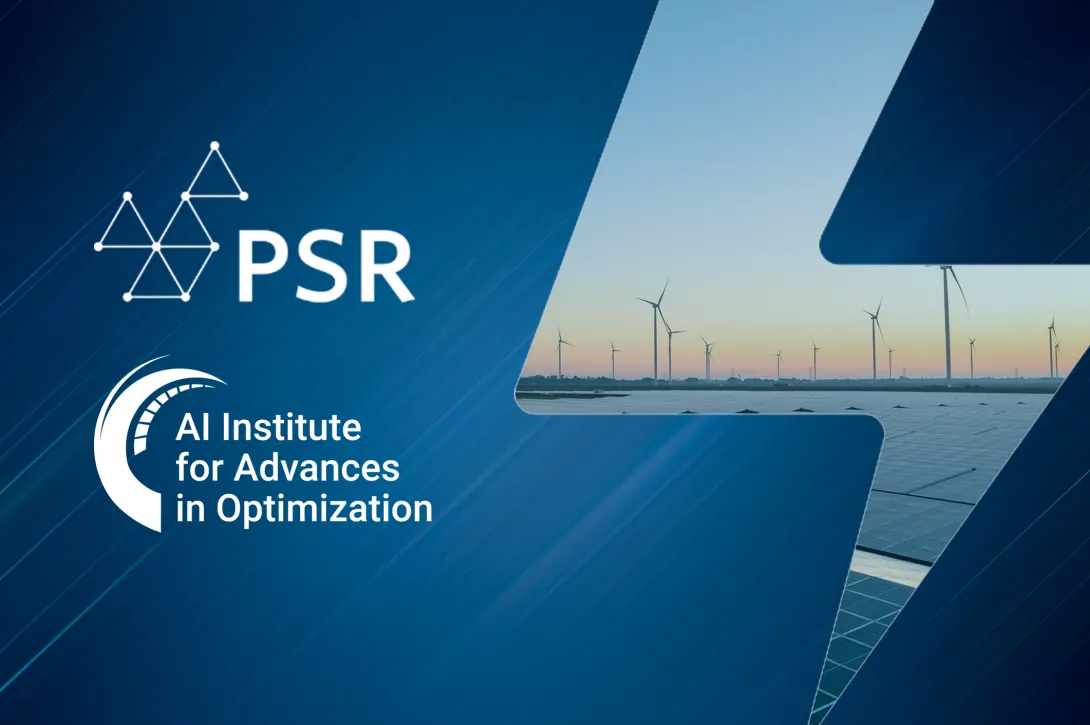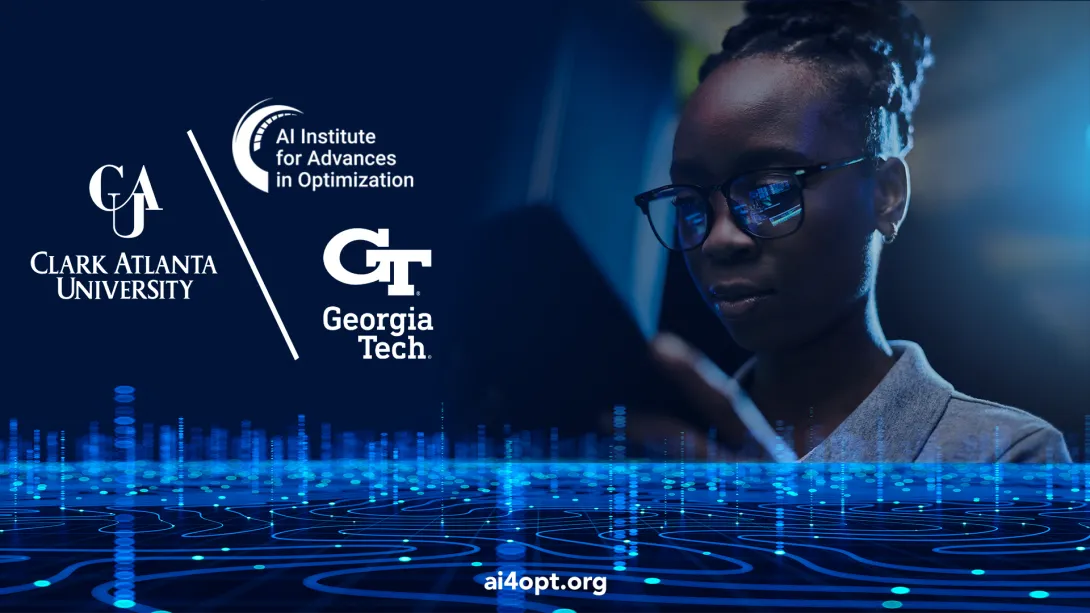Aug. 09, 2024
A research group is calling for internet and social media moderators to strengthen their detection and intervention protocols for violent speech.
Their study of language detection software found that algorithms struggle to differentiate anti-Asian violence-provoking speech from general hate speech. Left unchecked, threats of violence online can go unnoticed and turn into real-world attacks.
Researchers from Georgia Tech and the Anti-Defamation League (ADL) teamed together in the study. They made their discovery while testing natural language processing (NLP) models trained on data they crowdsourced from Asian communities.
“The Covid-19 pandemic brought attention to how dangerous violence-provoking speech can be. There was a clear increase in reports of anti-Asian violence and hate crimes,” said Gaurav Verma, a Georgia Tech Ph.D. candidate who led the study.
“Such speech is often amplified on social platforms, which in turn fuels anti-Asian sentiments and attacks.”
Violence-provoking speech differs from more commonly studied forms of harmful speech, like hate speech. While hate speech denigrates or insults a group, violence-provoking speech implicitly or explicitly encourages violence against targeted communities.
Humans can define and characterize violent speech as a subset of hateful speech. However, computer models struggle to tell the difference due to subtle cues and implications in language.
The researchers tested five different NLP classifiers and analyzed their F1 score, which measures a model's performance. The classifiers reported a 0.89 score for detecting hate speech, while detecting violence-provoking speech was only 0.69. This contrast highlights the notable gap between these tools and their accuracy and reliability.
The study stresses the importance of developing more refined methods for detecting violence-provoking speech. Internet misinformation and inflammatory rhetoric escalate tensions that lead to real-world violence.
The Covid-19 pandemic exemplified how public health crises intensify this behavior, helping inspire the study. The group cited that anti-Asian crime across the U.S. increased by 339% in 2021 due to malicious content blaming Asians for the virus.
The researchers believe their findings show the effectiveness of community-centric approaches to problems dealing with harmful speech. These approaches would enable informed decision-making between policymakers, targeted communities, and developers of online platforms.
Along with stronger models for detecting violence-provoking speech, the group discusses a direct solution: a tiered penalty system on online platforms. Tiered systems align penalties with severity of offenses, acting as both deterrent and intervention to different levels of harmful speech.
“We believe that we cannot tackle a problem that affects a community without involving people who are directly impacted,” said Jiawei Zhou, a Ph.D. student who studies human-centered computing at Georgia Tech.
“By collaborating with experts and community members, we ensure our research builds on front-line efforts to combat violence-provoking speech while remaining rooted in real experiences and needs of the targeted community.”
The researchers trained their tested NLP classifiers on a dataset crowdsourced from a survey of 120 participants who self-identified as Asian community members. In the survey, the participants labeled 1,000 posts from X (formerly Twitter) as containing either violence-provoking speech, hateful speech, or neither.
Since characterizing violence-provoking speech is not universal, the researchers created a specialized codebook for survey participants. The participants studied the codebook before their survey and used an abridged version while labeling.
To create the codebook, the group used an initial set of anti-Asian keywords to scan posts on X from January 2020 to February 2023. This tactic yielded 420,000 posts containing harmful, anti-Asian language.
The researchers then filtered the batch through new keywords and phrases. This refined the sample to 4,000 posts that potentially contained violence-provoking content. Keywords and phrases were added to the codebook while the filtered posts were used in the labeling survey.
The team used discussion and pilot testing to validate its codebook. During trial testing, pilots labeled 100 Twitter posts to ensure the sound design of the Asian community survey. The group also sent the codebook to the ADL for review and incorporated the organization’s feedback.
“One of the major challenges in studying violence-provoking content online is effective data collection and funneling down because most platforms actively moderate and remove overtly hateful and violent material,” said Tech alumnus Rynaa Grover (M.S. CS 2024).
“To address the complexities of this data, we developed an innovative pipeline that deals with the scale of this data in a community-aware manner.”
Emphasis on community input extended into collaboration within Georgia Tech’s College of Computing. Faculty members Srijan Kumar and Munmun De Choudhury oversaw the research that their students spearheaded.
Kumar, an assistant professor in the School of Computational Science and Engineering, advises Verma and Grover. His expertise is in artificial intelligence, data mining, and online safety.
De Choudhury is an associate professor in the School of Interactive Computing and advises Zhou. Their research connects societal mental health and social media interactions.
The Georgia Tech researchers partnered with the ADL, a leading non-governmental organization that combats real-world hate and extremism. ADL researchers Binny Mathew and Jordan Kraemer co-authored the paper.
The group will present its paper at the 62nd Annual Meeting of the Association for Computational Linguistics (ACL 2024), which takes place in Bangkok, Thailand, Aug. 11-16
ACL 2024 accepted 40 papers written by Georgia Tech researchers. Of the 12 Georgia Tech faculty who authored papers accepted at the conference, nine are from the College of Computing, including Kumar and De Choudhury.
“It is great to see that the peers and research community recognize the importance of community-centric work that provides grounded insights about the capabilities of leading language models,” Verma said.
“We hope the platform encourages more work that presents community-centered perspectives on important societal problems.”
Visit https://sites.gatech.edu/research/acl-2024/ for news and coverage of Georgia Tech research presented at ACL 2024.
News Contact
Bryant Wine, Communications Officer
bryant.wine@cc.gatech.edu
Aug. 08, 2024
Social media users may need to think twice before hitting that “Post” button.
A new large-language model (LLM) developed by Georgia Tech researchers can help them filter content that could risk their privacy and offer alternative phrasing that keeps the context of their posts intact.
According to a new paper that will be presented at the 2024 Association for Computing Linguistics(ACL) conference, social media users should tread carefully about the information they self-disclose in their posts.
Many people use social media to express their feelings about their experiences without realizing the risks to their privacy. For example, a person revealing their gender identity or sexual orientation may be subject to doxing and harassment from outside parties.
Others want to express their opinions without their employers or families knowing.
Ph.D. student Yao Dou and associate professors Alan Ritter and Wei Xu originally set out to study user awareness of self-disclosure privacy risks on Reddit. Working with anonymous users, they created an LLM to detect at-risk content.
While the study boosted user awareness of the personal information they revealed, many called for an intervention. They asked the researchers for assistance to rewrite their posts so they didn’t have to be concerned about privacy.
The researchers revamped the model to suggest alternative phrases that reduce the risk of privacy invasion.
One user disclosed, “I’m 16F I think I want to be a bi M.” The new tool offered alternative phrases such as:
- “I am exploring my sexual identity.”
- “I have a desire to explore new options.”
- “I am attracted to the idea of exploring different gender identities.”
Dou said the challenge is making sure the model provides suggestions that don’t change or distort the desired context of the post.
“That’s why instead of providing one suggestion, we provide three suggestions that are different from each other, and we allow the user to choose which one they want,” Dou said. “In some cases, the discourse information is important to the post, and in that case, they can choose what to abstract.”
WEIGHING THE RISKS
The researchers sampled 10,000 Reddit posts from a pool of 4 million that met their search criteria. They annotated those posts and created 19 categories of self-disclosures, including age, sexual orientation, gender, race or nationality, and location.
From there, they worked with Reddit users to test the effectiveness and accuracy of their model, with 82% giving positive feedback.
However, a contingent thought the model was “oversensitive,” highlighting content they did not believe posed a risk.
Ultimately, the researchers say users must decide what they will post.
“It’s a personal decision,” Ritter said. “People need to look at this and think about what they’re writing and decide between this tradeoff of what benefits they are getting from sharing information versus what privacy risks are associated with that.”
Xu acknowledged that future work on the project should include a metric that gives users a better idea of what types of content are more at risk than others.
“It’s kind of the way passwords work,” she said. “Years ago, they never told you your password strength, and now there’s a bar telling you how good your password is. Then you realize you need to add a special character and capitalize some letters, and that’s become a standard. This is telling the public how they can protect themselves. The risk isn’t zero, but it helps them think about it.”
WHAT ARE THE CONSEQUENCES?
While doxing and harassment are the most likely consequences of posting sensitive personal information, especially for those who belong to minority groups, the researchers say users have other privacy concerns.
Users should know that when they draft posts on a site, their input can be extracted by the site’s application programming interface (API). If that site has a data breach, a user’s personal information could fall into unwanted hands.
“I think we should have a path toward having everything work locally on the user’s computer, so it doesn’t rely on any external APIs to send this data off their local machine,” Ritter said.
Ritter added that users could also be targets of popular scams like phishing without ever knowing it.
“People trying targeted phishing attacks can learn personal information about people online that might help them craft more customized attacks that could make users vulnerable,” he said.
The safest way to avoid a breach of privacy is to stay off social media. But Xu said that’s impractical as there are resources and support these sites can provide that users may not get from anywhere else.
“We want people who may be afraid of social media to use it and feel safe when they post,” she said. “Maybe the best way to get an answer to a question is to ask online, but some people don’t feel comfortable doing that, so a tool like this can make them more comfortable sharing without much risk.”
For more information about Georgia Tech research at ACL, please visit https://sites.gatech.edu/research/acl-2024/.
News Contact
Nathan Deen
Communications Officer
School of Interactive Computing
Aug. 01, 2024
Meilin Liu, Hightower Chair and Regents’ Professor in the School of Materials Science and Engineering, has been elected to the European Academy of Sciences (EURASC).
The honor is annually awarded to European scholars and engineers for their research and contributing to the development of advanced technologies. Members also demonstrate a strong commitment to promoting science and technology in Europe.
News Contact
Jason Maderer
College of Engineering
Aug. 01, 2024
A Georgia Tech researcher will continue to mitigate harmful post-deployment effects created by artificial intelligence (AI) as he joins the 2024-2025 cohort of fellows selected by the Berkman-Klein Center (BKC) for Internet and Society at Harvard University.
Upol Ehsan is the first Georgia Tech graduate selected by BKC. As a fellow, he will contribute to its mission of exploring and understanding cyberspace, focusing on AI, social media, and university discourse.
Entering its 25th year, the BKC Harvard fellowship program addresses pressing issues and produces impactful research that influences academia and public policy. It offers a global perspective, a vibrant intellectual community, and significant funding and resources that attract top scholars and leaders.
The program is highly competitive and sought after by early career candidates and veteran academic and industry professionals. Cohorts hail from numerous backgrounds, including law, computer science, sociology, political science, neuroscience, philosophy, and media studies.
“Having the opportunity to join such a talented group of people and working with them is a treat,” Ehsan said. “I’m looking forward to adding to the prismatic network of BKC Harvard and learning from the cohesively diverse community.”
While at Georgia Tech, Ehsan expanded the field of explainable AI (XAI) and pioneered a subcategory he labeled human-centered explainable AI (HCXAI). Several of his papers introduced novel and foundational concepts into that subcategory of XAI.
Ehsan works with Professor Mark Riedl in the School of Interactive Computing and the Human-centered AI and Entertainment Intelligence Lab.
Ehsan says he will continue to work on research he introduced in his 2022 paper The Algorithmic Imprint, which shows how the potential harm from algorithms can linger even after an algorithm is no longer used. His research has informed the United Nations’ algorithmic reparations policies and has been incorporated into the National Institute of Standards and Technology AI Risk Management Framework.
“It’s a massive honor to receive this recognition of my work,” Ehsan said. “The Algorithmic Imprint remains a globally applicable Responsible AI concept developed entirely from the Global South. This recognition is dedicated to the participants who made this work possible. I want to take their stories even further."
While at BKC Harvard, Ehsan will develop a taxonomy of potentially harmful AI effects after a model is no longer used. He will also design a process to anticipate these effects and create interventions. He said his work addresses an “accountability blindspot” in responsible AI, which tends to focus on potential harmful effects created during AI deployment.
News Contact
Nathan Deen
Communications Officer
School of Interactive Computing
Jul. 30, 2024
From airplanes to soda cans, aluminum is a crucial — not to mention, an incredibly sustainable — material in manufacturing. Since 2019, Georgia Tech has partnered with Novelis, a global leader in aluminum rolling and recycling, through the Novelis Innovation Hub to advance research and business opportunities in aluminum manufacturing.
Novelis and the Georgia Institute of Technology recently co-hosted the 19th International Conference on Aluminum Alloys (ICAA19). Held on Georgia Tech's campus, this event brought together the brightest minds in aluminum technology for four days of intensive learning and networking.
Since its inception in 1986, ICAA has been the premier global forum for aluminum manufacturing innovations. This year, the conference attracted over 300 participants from 19 countries, including representatives from academia, research organizations, and industry leaders.
“The diverse mix of attendees created a rich tapestry of knowledge and experience, fostering a robust exchange of ideas,” said Naresh Thadhani, conference co-chair and professor in the School of Materials Science and Engineering
ICAA19 featured 12 symposia topics and over 250 technical presentations, delving into critical themes such as sustainability, future mobility, and next-generation manufacturing. Keynote addresses from leaders at the Aluminum Association, Airbus, and Coca-Cola set the stage for insightful discussions. Novelis Chief Technology Officer Philippe Meyer and Georgia Tech Executive Vice President for Research Chaouki Abdallah headlined the event, underscoring the importance of Novelis’ partnership with Georgia Tech.
Marking the fifth anniversary of the Novelis Innovation Hub at Georgia Tech, Hub Executive Director Shreyes Melkote says that “ICAA19 represents a prime example of the close collaboration between Novelis and the Institute, enabled by the Novelis Innovation Hub.” Melkote, a professor in the George W. Woodruff School of Mechanical Engineering, also serves as the associate director of the Georgia Tech Manufacturing Institute.
“This unique center for research, development, and technology has been instrumental in advancing aluminum innovations, exemplifying the power of partnerships in driving industry progress,” says Meyer. “As we reflect on the success of ICAA19, we remain committed to strengthening our existing partnerships and forging new alliances to accelerate innovation. The collaborative spirit showcased at the conference is a testament to our dedication to leading the aluminum industry into a more sustainable future.”
News Contact
Audra Davidson
Research Communications Program Manager
Georgia Tech Manufacturing Institute
Jul. 29, 2024
People often ask me how I stay up to date with the latest trends and developments in the dynamic world of supply chain management. Given the rapid pace of change in our field, it's essential to leverage a variety of resources to maintain a comprehensive and current understanding. Here, I’d like to share some of the resources I find most effective. These include weekly newsletters, podcasts, and key LinkedIn follows. The combination of these resources provides a broad spectrum of insights, covering supply chain, transportation, fulfillment, technology, and the economy.
Why the Economy Matters
While supply chain, transportation, and technology are obvious areas to focus on, the inclusion of economic insights might seem less intuitive. However, understanding the economy is critical. Supply chains are fundamentally about balancing supply and demand, justifying investments, and fostering business growth. Many inputs are global, the employment market drives wages and employment quality, and macroeconomic factors like growth and interest rates influence numerous aspects of supply chains. Hence, keeping an eye on economic trends is indispensable for any supply chain professional.
Essential Supply Chain Newsletters
Bloomberg’s Supply Lines
One of my top choices for supply chain news is Bloomberg’s Supply Lines. This multi-weekly newsletter offers concise, high quality updates on global supply chain developments. It’s a free resource from a reputable source, making it an accessible way to stay informed about major trends and events affecting our industry.
Dynamo Ventures Dispatch
Another excellent resource is Dynamo Ventures’ Monday newsletter. This newsletter aggregates a wealth of information on current supply chain issues, with a particular focus on supply chain technology and venture capital (VC) and investor interest in the field. It’s an invaluable tool for understanding the intersection of innovation and investment in supply chains.
Must Listen Podcasts
Freightvine with Chris Caplice
For those who prefer podcasts, "Freightvine" hosted by Chris Caplice is a must listen. Caplice is a legend in the world of transportation, and his podcast covers all the key topics in the industry. From transportation management to logistics challenges, Freightvine provides deep insights and expert perspectives.
What Is Going On in Shipping?
If global freight movement is your area of interest, "What Is Going On in Shipping?" on YouTube offers an inside scoop on macro issues in global port and freight flow. The channel provides timely and in-depth analyses of the challenges and trends affecting global shipping, making it an excellent resource for those focused on international logistics.
Macro Musings
I like this one because it goes deep into how the Fed makes decisions on economic policy and actions and includes linkage to business conditions and the macro economy.
Key LinkedIn Influencers
Brittain Ladd
For fulfillment and ecommerce insights, I recommend following Brittain Ladd on LinkedIn. Although I don’t always agree with all of his views, Brittain provides detailed and thought provoking opinions on all aspects of fulfillment. His posts are well researched and cover a wide range of topics, offering valuable perspectives for anyone involved in ecommerce and order fulfillment.
Bridging Supply Chain and Economics
Bloomberg’s Odd Lots Podcast
Lastly, for the intersection of supply chain and economics, Bloomberg’s "Odd Lots" podcast is unparalleled. During the pandemic, the podcast delved deep into supply chain issues, and it continues to feature great guests who provide actionable insights on everything from procurement strategies to retail pricing. The discussions on macroeconomic issues are particularly relevant, offering a broader context that helps in understanding the economic forces shaping supply chains.
Conclusion
In conclusion, staying current in the supply chain field requires a multifaceted approach. By leveraging newsletters like Bloomberg’s Supply Lines and Dynamo Ventures, listening to podcasts like Freightvine and Odd Lots, and following industry influencers on LinkedIn, you can gain a comprehensive understanding of the trends and issues shaping our industry. Each of these resources brings a unique perspective, helping to ensure that you are well informed and prepared to navigate the complexities of modern supply chains.
I also consume many other resources and apologize if I didn’t include your site. I won't hype my own work, but it is out there to consume. How do you stay current in the world of supply chain? We'd love to hear from you about your go to sources and will do a follow up based on crowdsourcing the audience's best resources to stay current in all things supply chain. Please email me at info@scl.gatech.edu with your Go Tos and we’ll create a better list together.
By combining these resources, you can stay ahead of the curve, continuously enhancing your knowledge and skills in this ever evolving field.
Chris Gaffney, SCL Managing Director
News Contact
info@scl.gatech.edu
Jul. 23, 2024
When it comes to manufacturing innovation, the “valley of death” — the gap between the lab and the industry floor where even the best discoveries often get lost — looms large.
“An individual faculty’s lab focuses on showing the innovation or the new science that they discovered,” said Aaron Stebner, professor and Eugene C. Gwaltney Jr. Chair in Manufacturing in the George W. Woodruff School of Mechanical Engineering. “At that point, the business case hasn't been made for the technology yet — there's no testing on an industrial system to know if it breaks or if it scales up. A lot of innovation and scientific discovery dies there.”
The Georgia Tech Manufacturing Institute (GTMI) launched the Advanced Manufacturing Pilot Facility (AMPF) in 2017 to help bridge that gap.
Now, GTMI is breaking ground on an extensive expansion to bring new capabilities in automation, artificial intelligence, and data management to the facility.
“This will be the first facility of this size that's being intentionally designed to enable AI to perform research and development in materials and manufacturing at the same time,” said Stebner, “setting up GTMI as not just a leader in Georgia, but a leader in automation and AI in manufacturing across the country.”
AMPF: A Catalyst for Collaboration
Located just north of Georgia Tech’s main campus, APMF is a 20,000-square-foot facility serving as a teaching laboratory, technology test bed, and workforce development space for manufacturing innovations.
“The pilot facility,” says Stebner, “is meant to be a place where stakeholders in academic research, government, industry, and workforce development can come together and develop both the workforce that is needed for future technologies, as well as mature, de-risk, and develop business cases for new technologies — proving them out to the point where it makes sense for industry to pick them up.”
In addition to serving as the flagship facility for GTMI research and the state’s Georgia AIM (Artificial Intelligence in Manufacturing) project, the AMPF is a user facility accessible to Georgia Tech’s industry partners as well as the Institute’s faculty, staff, and students.
“We have all kinds of great capabilities and technologies, plus staff that can train students, postdocs, and faculty on how to use them,” said Stebner, who also serves as co-director of the GTMI-affiliated Georgia AIM project. “It creates a unique asset for Georgia Tech faculty, staff, and students.”
Bringing AI and Automation to the Forefront
The renovation of APMF is a key component of the $65 million grant, awarded to Georgia Tech by the U.S. Department of Commerce’s Economic Development Administration in 2022, which gave rise to the Georgia AIM project. With over $23 million in support from Georgia AIM, the improved facility will feature new workforce training programs, personnel, and equipment.
Set to complete in Spring 2026, the Institute’s investment of $16 million supports construction that will roughly triple the size of the facility — and work to address a major roadblock for incorporating AI and automation into manufacturing practices: data.
“There’s a lot of work going on across the world in using machine learning in engineering problems, including manufacturing, but it's limited in scale-up and commercial adoption,” explained Stebner.
Machine learning algorithms have the potential to make manufacturing more efficient, but they need a lot of reliable, repeatable data about the processes and materials involved to be effective. Collecting that data manually is monotonous, costly, and time-consuming.
“The idea is to automate those functions that we need to enable AI and machine learning” in manufacturing, says Stebner. “Let it be a facility where you can imagine new things and push new boundaries and not just be stuck in demonstrating concepts over and over again.”
To make that possible, the expanded facility will couple AI and data management with robotic automation.
“We're going to be able to demonstrate automation from the very beginning of our process all the way through the entire ecosystem of manufacturing,” said Steven Sheffield, GTMI’s senior assistant director of research operations.
“This expansion — no one else has done anything like it,” added Steven Ferguson, principal research scientist with GTMI and managing director of Georgia AIM. “We will have the leading facility for demonstrating what a hyperconnected and AI-driven manufacturing enterprise looks like. We’re setting the stage for Georgia Tech to continue to lead in the manufacturing space for the next decade and beyond.”
News Contact
Audra Davidson
Research Communications Program Manager
Georgia Tech Manufacturing Institute
Jul. 23, 2024
From keeping warm in the winter to doing laundry, heat is crucial to daily life. But as the world grapples with climate change, buildings’ increasing energy consumption is a critical problem. Currently, heat is produced by burning fossil fuels like coal, oil, and gas, but that will need to change as the world shifts to clean energy.
Georgia Tech researchers in the George W. Woodruff School of Mechanical Engineering (ME) are developing more efficient heating systems that don’t rely on fossil fuels. They demonstrated that combining two commonly found salts could help store clean energy as heat; this can be used for heating buildings or integrated with a heat pump for cooling buildings.
The researchers presented their research in “Thermochemical Energy Storage Using Salt Mixtures With Improved Hydration Kinetics and Cycling Stability,” in the Journal of Energy Storage.
Reaction Redux
The fundamental mechanics of heat storage are simple and can be achieved through many methods. A basic reversible chemical reaction is the foundation for their approach: A forward reaction absorbs heat and then stores it, while a reverse reaction releases the heat, enabling a building to use it.
ME Assistant Professor Akanksha Menon has been interested in thermal energy storage since she began working on her Ph.D. When she arrived at Georgia Tech and started the Water-Energy Research Lab (WERL), she became involved in not only developing storage technology and materials but also figuring out how to integrate them within a building. She thought understanding the fundamental material challenges could translate into creating better storage.
“I realized there are so many things that we don't understand, at a scientific level, about how these thermo-chemical materials work between the forward and reverse reactions,” she said.
The Superior Salt
The reactions Menon works with use salt. Each salt molecule can hold a certain number of water molecules within its structure. To instigate the chemical reaction, the researchers dehydrate the salt with heat, so it expels water vapor as a gas. To reverse the reaction, they hydrate the salt with water, forcing the salt structure’s expansion to accommodate those water molecules.
It sounds like a simple process, but as this expansion/contraction process happens, the salt gets more stressed and will eventually mechanically fail, the same way lithium-ion batteries only have so many charge-discharge cycles.
“You can start with something that's a nice spherical particle, but after it goes through a few of these dehydration-hydration cycles, it just breaks apart into tiny particles and completely pulverizes or it overhydrates and agglomerates into a block,” Menon explained.
These changes aren’t necessarily catastrophic, but they do make the salt ineffective for long-term heat storage as the storage capacity decreases over time.
Menon and her student, Erik Barbosa, a Ph.D. student in ME, began combining salts that react with water in different ways. After testing six salts over two years, they found two that complemented each other well. Magnesium chloride often fails because it absorbs too much water, whereas strontium chloride is very slow to hydrate. Together, their respective limitations can mutually benefit each other and lead to improved heat storage.
“We didn't plan to mix salts; it was just one of the experiments we tried,” Menon said. “Then we saw this interactive behavior and spent a whole year trying to understand why this was happening and if it was something we could generalize to use for thermal energy storage.”
The Energy Storage of the Future
Menon is just beginning with this research, which was supported by a National Science Foundation (NSF) CAREER Award. Her next step is developing the structures capable of containing these salts for heat storage, which is the focus of an Energy Earthshots project funded by the U.S. Department of Energy’s (DOE) Office of Basic Energy Sciences.
A system-level demonstration is also planned, where one solution is filling a drum with salts in a packed bed reactor. Then hot air would flow across the salts, dehydrating them and effectively charging the drum like a battery. To release that stored energy, humid air would be blown over the salts to rehydrate the crystals. The subsequently released heat can be used in a building instead of fossil fuels. While initiating the reaction needs electricity, this could come from off-peak (excess renewable electricity) and the stored thermal energy could be deployed at peak times. This is the focus of another ongoing project in the lab that is funded by the DOE’s Building Technologies Office.
Ultimately, this technology could lead to climate-friendly energy solutions. Plus, unlike many alternatives like lithium batteries, salt is a widely available and cost-effective material, meaning its implementation could be swift. Salt-based thermal energy storage can help reduce carbon emissions, a vital strategy in the fight against climate change.
“Our research spans the range from fundamental science to applied engineering thanks to funding from the NSF and DOE,” Menon said. “This positions Georgia Tech to make a significant impact toward decarbonizing heat and enabling a renewable future.”
News Contact
Tess Malone, Senior Research Writer/Editor
tess.malone@gatech.edu
Jul. 22, 2024
This partnership in the advancement of AI and mathematical optimization to address pressing energy transformations in Latin America and the U.S. has formed between the NSF Artificial Intelligence (AI) Research Institute for Advances in Optimization (AI4OPT) at Georgia Tech and PSR, Inc. - Energy Consulting and Analytics.
PSR is a global leader in analytical solutions for the energy sector, providing innovative technical consultancy services and state-of-the-art power systems planning software. Their tools are used for detailed modeling of entire countries or regions and are utilized in over 70 countries. Together with AI4OPT, they aim to leverage advancements in AI and mathematical optimization to address pressing energy transformations in Latin America and the U.S.
Latin America boasts abundant renewable energy resources, especially hydropower, leading to one of the largest shares of renewables in its energy mix. However, expanding renewable energy capacity in Latin America and the U.S. to meet decarbonization goals will require system operational advances and new technologies that can adapt to current needs.
One focus of this collaboration will be studying how to efficiently incorporate pumped storage into the resource mix as a solution for long-duration storage. These plants act as large batteries, pumping water to higher reservoirs during low demand periods and generating electricity during high demand with minimal energy loss over time. This technology supports both short-term and long-term energy storage, making it crucial for managing the variability of intermittent renewables like solar and wind.
The complex and large-scale nature of the expansion problem, exacerbated by inherent uncertainty and time-coupled decisions, traditionally requires sophisticated optimization techniques. AI innovations now provide faster solutions and better representations of non-linear dynamics, leading to more cost-effective operations and optimized energy mix selection for the energy transition.
This collaboration plans to use machine learning to enhance power system operators' ability to perform faster security checks and screenings. As renewable energy sources introduce more variability, traditional methods struggle with the increasing number of scenarios needed for grid stability. Machine learning offers a solution by expediting these analyses, supporting the integration of more renewable energy into the system.
About PSR
PSR is a global provider of analytical solutions for the energy sector, spanning from insightful and innovative technical consultancy services to state-of-the-art specialized power systems planning software applied to the detailed modelling of entire countries or regions. Having its products applied in over 70 countries, PSR contributes to the research and development of optimization and data analytics’ tools for guaranteeing a reliable and least-cost operation of power systems, helping the countries achieve their decarbonization targets.
About AI4OPT
The Artificial Intelligence (AI) Research Institute for Advances in Optimization, or AI4OPT, aims to deliver a paradigm shift in automated decision-making at massive scales by fusing AI and Mathematical Optimization (MO) to achieve breakthroughs that neither field can achieve independently. The Institute is driven by societal challenges in energy, logistics and supply chains, resilience and sustainability, and circuit design and control. To address the widening gap in job opportunities, the Institute delivers an innovative longitudinal education and workforce development program.
News Contact
Breon Martin
AI Research Communications Manager
Georgia Tech
Jul. 22, 2024
Clark Atlanta University (CAU), in collaboration with Georgia Tech’s NSF Artificial Intelligence (AI) Research Institute for Advances in Optimization (AI4OPT), has been awarded a four-year $2.79 million grant (Award ID 2402493) by the National Science Foundation (NSF) to create an AI Hub. This collaborative effort aims to advance AI education and research at minority-serving institutions, particularly historically Black colleges and universities (HBCUs).
This initiative, part of the NSF ExpandAI program, aims to boost minority-serving institution participation in AI research, education, and workforce development through capacity-building projects and partnerships within the NSF-led National AI Research Institutes ecosystem.
Building an AI community is no easy feat, but the CAU-GT/AI4OPT collaboration is prepared to meet it. The project, known as AIHUB@CAU, will be led by principal investigator Charles B. Pierre, associate professor in CAU’s Department of Mathematical Sciences.
"The mission of the grant aligns with the AI4OPT Faculty Training Program, which focuses on strategies to increase minority participation in AI research programs from HBCUs to other minority-serving institutions," said Pierre, who also leads the Educational and Diversity Initiatives at AI4OPT. "Our goal is to ensure diverse representation in the AI field."
The collaboration will use existing educational resources and infrastructure to build centers of excellence in AI and a community of empowered Black AI researchers.
"We anticipate challenges in developing coursework, including finding qualified industry professionals to teach and preparing academic professors unfamiliar with AI," Pierre said. "Our aim is to establish Ph.D. programs at CAU and position the university as a hub for AI training, addressing these issues head-on."
AIHUB@CAU will integrate industry partnerships to accelerate curriculum development and real-world applications. It expands AI education beyond machine learning to encompass decision-making and applications in fields like business analytics, cyber-physical security, and operations research.
Partially funded through NSF's Louis Stokes Alliances for Minority Participation program, this award underscores NSF's commitment to diversity in STEM fields through impactful educational and research initiatives.
"Establishing programs at institutions like Clark Atlanta University and AI4OPT at Georgia Tech provides students with essential resources and tools to succeed in this ever-evolving field," Pierre noted.
Goals and Structure of the AI Education Program
Main Goals of Creating AI Courses at the Undergraduate and Graduate Levels:
- Close the gap of AI graduates from HBCUs at undergraduate and graduate levels.
- Prepare HBCU students for the AI workforce.
- Align with the vision of AI4OPT at Georgia Tech to "democratize access to AI education."
Impact on Students' Career Prospects and the AI Research Community:
- Undergraduate courses and programs will prepare students for entry-level positions in the field.
- Graduate courses and programs will prepare students for research and participation in the AI research community.
Role and Contribution:
- AI4OPT at Georgia Tech will assist CAU with the development of both undergraduate and graduate courses and programs.
- Offer research opportunities to CAU students at the undergraduate and graduate levels.
- AI4OPT at Georgia Tech will be a partner in the established AI Research Hub.
Support for Development of MS and Ph.D. Courses:
- Use current courses at Georgia Tech as a template.
- Use the courses offered through the Faculty Training Program (FTP) of AI4OPT.
Foundational AI Courses:
- Courses already taught by CAU faculty in the AI4OPT FTP.
- Courses available at Georgia Tech.
- New courses to be developed by AIHUB@CAU based on Intel material, focusing on computer vision and natural language processing.
- Courses in applied optimization developed by AI4OPT.
- New use-inspired AI courses teaching applications of AI in various domains, such as supply chains, security, chemistry, and manufacturing.
Research Opportunities:
- The Undergraduate Research Program (URP) will provide students with early exposure to AI research, including summer internships at Georgia Tech and other AI4OPT sites.
- The graduate programs will include an 18-month non-thesis master's degree with a summer internship and capstone project, and a two-year thesis master's degree supported by a six-month research project.
Structure of the New Master in AI Program:
- Courses in five categories to support the master’s program:
- Existing courses at CAU taught in the AI4OPT FTP.
- Courses available at Georgia Tech.
- New courses based on Intel material.
- Applied optimization courses developed by AI4OPT.
- New courses developed by AIHUB@CAU focusing on AI applications in various domains.
Collaborations and Internships:
- Joint supervision of research projects by CAU and AI4OPT faculty.
- Summer internships starting in 2026.
- Capstone projects facilitated by Georgia Tech and industrial partners.
About AI4OPT
The Artificial Intelligence (AI) Research Institute for Advances in Optimization, or AI4OPT, aims to deliver a paradigm shift in automated decision-making at massive scales by fusing AI and Mathematical Optimization (MO) to achieve breakthroughs that neither field can achieve independently. The Institute is driven by societal challenges in energy, logistics and supply chains, resilience and sustainability, and circuit design and control. To address the widening gap in job opportunities, the Institute delivers an innovative longitudinal education and workforce development program.
About Georgia Tech
The Georgia Institute of Technology, or Georgia Tech, is a top 10 public research university developing leaders who advance technology and improve the human condition. The Institute offers business, computing, design, engineering, liberal arts, and sciences degrees. Its nearly 40,000 students, representing 50 states and 149 countries, study at the main campus in Atlanta, at international campuses, and through distance and online learning. As a leading technological university, Georgia Tech is an engine of economic development for Georgia, the Southeast, and the nation, conducting more than $1 billion in research annually for government, industry, and society.
About Clark Atlanta University
Clark Atlanta University was formed with the consolidation of Atlanta University and Clark College, both of which hold unique places in the annals of African American history. Atlanta University, established in 1865 by the American Missionary Association, was the nation’s first institution to award graduate degrees to African Americans. CAU is also the largest of the 37-member UNCF institutions. CAU, established four years later in 1869, was the nation’s first four-year liberal arts college to serve a primarily African American student population. Today, with over 4,000 students, CAU is the largest of the four institutions (CAU, Morehouse College, Spelman College, and Morehouse School of Medicine) that comprise the Atlanta University Center Consortium.
About National Science Foundation
The U.S. National Science Foundation propels the nation forward by advancing fundamental research in all fields of science and engineering. NSF supports research and people by providing facilities, instruments and funding to support their ingenuity and sustain the U.S. as a global leader in research and innovation. With a fiscal year 2023 budget of $9.5 billion, NSF funds reach all 50 states through grants to nearly 2,000 colleges, universities and institutions. Each year, NSF receives more than 40,000 competitive proposals and makes about 11,000 new awards. Those awards include support for cooperative research with industry, Arctic and Antarctic research and operations, and U.S. participation in international scientific efforts.
News Contact
Breon Martin
AI Research Communications Manager
Georgia Tech


